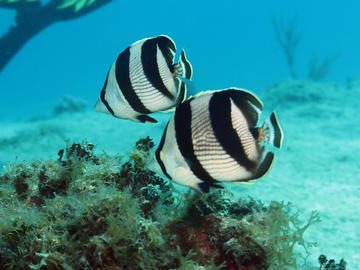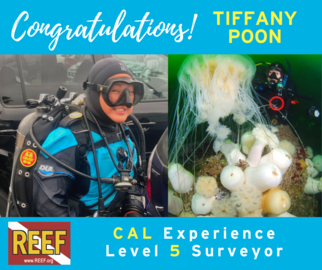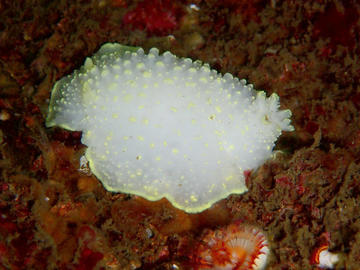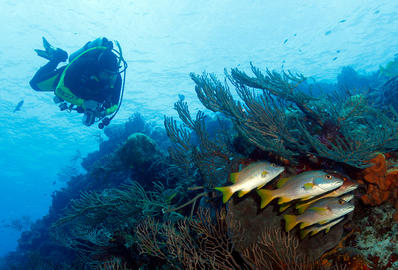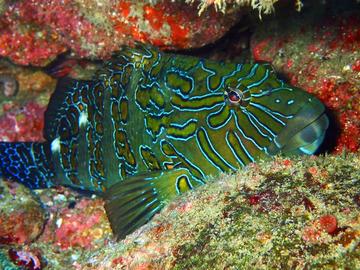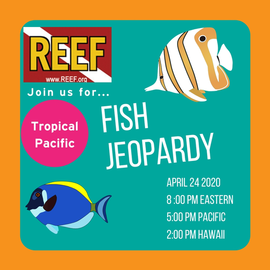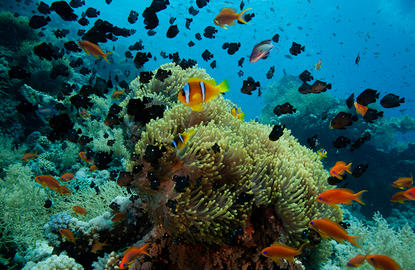Join us for some online fish-themed fun and learning during the month of May! Fishy Hours are online group games just for fun, while Fishinars are REEF's brand of online fish ID classes and learning sessions. All sessions are free and all are invited to attend.
Have some socially-distanced fun during your COVID-19 time at home by joining us online for version 2.0 of our interactive game you can play at home - Fish Jeopardy (with a twist)!
Random members of our audience get to select the categories, but everyone guesses the answers. You keep your own score (if you want to). If you just want to log on and watch, that's OK too. The more the merrier.
You won't need a webcam or a microphone - when you register we'll send you the link you'll need to click on at the appointed time.
Did you know you can participate in REEF's Volunteer Fish Survey Project while snorkeling? It's a perfect way to dip your toes into citizen science and contribute valuable information about fish populations seen in our oceans, without all the gear and training involved with scuba diving. Snorkel surveys are perfect for:
Please put your pectoral fins together for the following REEF members who have recently moved up an Experience Level within our Volunteer Fish Survey Project!
Volunteers have the opportunity to advance through five levels (Novice through Expert) within each of our survey project regions. Experience Levels are obtained by a combination of fish/invertebrate ID tests and surveys submitted. As surveyors advance, their surveys are categorized in our online sightings database accordingly.
REEF Citizen Science Program Manager Janna Nichols recently had the honor of having a new species of nudibranch (sea slug) named after her! Cadlina jannanicholsae is part of a difficult-to-distinguish complex of nudibranchs that was previously thought to only include Hudson’s Dorid (Acanthodoris hudsoni) and Yellow Margin Dorid (Cadlina luteomarginata). The complex is monitored by REEF surveyors in the Pacific Northwest.
Cozumel is known for its many unique fish finds including the Cozumel-endemic Splendid Toadfish as well as high concentrations of other interesting species like Cherubfish, Blackcap Basslets, and Sargassum Triggerfish. When not diving, you will enjoy all the wonderful food and culture that Mexico has to offer, as well as daily seminars by Cozumel local and fish id expert Tracey Griffin. Reserve your spot today because this popular trip is sure to sell out quickly.
St. Vincent is known as the muck diving capital of the Caribbean. That doesn't mean that the water is always silty though - the leeward shore of the island typically has visibility up to 100 feet due to the presence of volcanic, granite-based sand that falls quickly when stirred. Surveyors hunting for "bucket list" fish species are in luck; the staff at Dive St. Vincent have a knack for finding small, cryptic species like frogfish, seahorses and more. The island has dramatic topside topography as well, making it a scenic location to enjoy during surface intervals.
With its mountainous desert landscapes, rocky reefs, and pinnacles, Baja is a favorite destination for REEF surveyors. This special charter is only offered only three times each year and provides a rare opportunity to explore both the northern and southern Sea of Cortez over a 12-night span.
Got the quarantine blues? Gills drying out? Missing your fish geek friends?
Join us for an hour of laughter, socializing, and game show fishy fun featuring the underwater marine life found in the Tropical Pacific. We'll include fish from Hawaii, the South Pacific, and the Central Indo-Pacific regions. Play along from home, or just sit back and watch. Even if you're not familiar with the marine life in this region, it's lots of fun no matter what!
The calm, clear waters of the Red Sea are a kaleidoscope of colorful fish, including many endemic species, and vibrant soft coral life. This special charter is a one-way crossing that offers a unique opportunity to explore many different areas of the Red Sea. The trip begins in Hurghada, in the northern Red Sea, includes diving around the Brothers Islands, and disembarks in Port Ghaleb in the south, allowing opporuntities to explore the southern Red Sea's coral gardens, walls, and lagoons.

